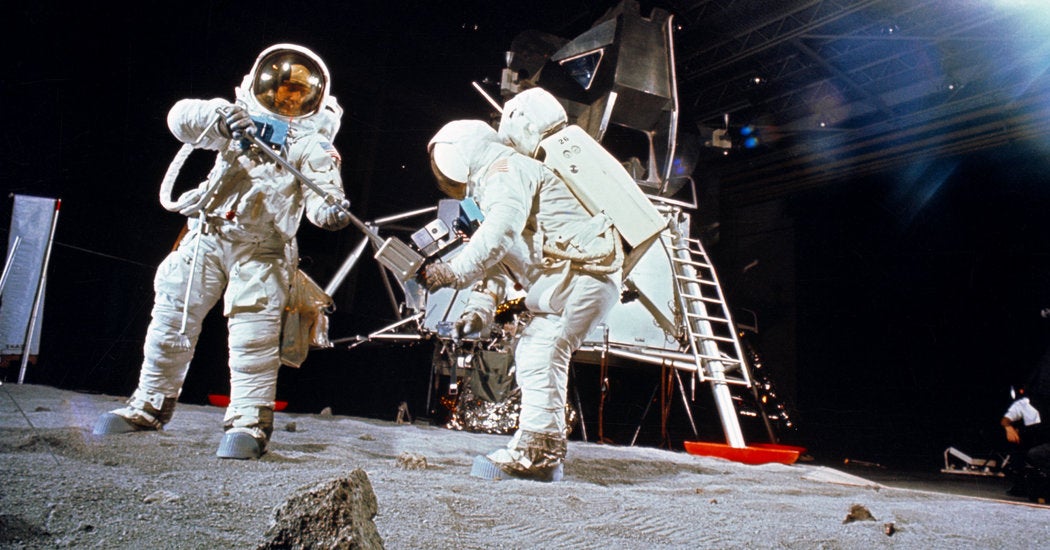They Kinda Want to Believe Apollo 11 Was Maybe a Hoax (Published 2019)

The quasi-investigations of Kaysing and Sibrel share similarities to the ones we see today. Dawson, like his predecessors, is a collage artist. All three men are personal essayists, too, unspooling their theories as tales of each man’s journey toward skepticism.
But the mood has shifted.
Kaysing and Sibrel were sincere kooks. Self-publishing a book through great personal expense requires a steadiness of conviction. So does making an almost-feature-length movie that you sell, for money, as a DVD. When Sibrel finally accepted his belief in the moon hoax, he told The New York Times in 2003, he wept.
But today, it is no longer necessary to commit to the cause to help spread it around. You can just type it into Reddit, or blurt it out on a podcast, or drag a crying-laughing emoji onto a picture of the lunar lander and post it on Instagram.
In recent years, the specter of a fake moon landing has been raised by figures as disparate as the Infowars founder Alex Jones (who treated it as a deathly serious issue), Rogan (who conjured it as a trippy thought experiment) and the N.B.A. star Stephen Curry (who tossed it out as a joke, prompting a NASA invitation to visit its moon rock collection). Dawson, YouTube’s conspiracy king, channels all of those moods at once, modulating his perspective line by line and shot by shot. He represents a new archetype: the ambivalent conspiracy theorist.
In Richard Hofstadter’s 1964 diagnosis of “The Paranoid Style in American Politics,” he described paranoid thinkers as “angry minds” addled by “heated exaggeration, suspiciousness and conspiratorial fantasy.”
But today’s more fashionable conspiratorial figures are not mad at all. You won’t find them crying over the moon. Rogan has cultivated a persona as an easygoing bro, willing to entertain out-there ideas before swatting them aside. And though Dawson is preaching from among the internet’s largest platforms — his channel surpassed 20 million subscribers this year — he acts as if he is bumbling through the dark corners of the web and reacting with wonder at whatever freaky idea pops up, as if he is watching a scary movie with millions of his closest friends.
At the end of his moon investigation, he decides, “I kind of believe it.”
Emotional ambivalence may be contemporary internet culture’s dominant mode. It is the hallmark of the internet troll, who blurs the line between sincerity and jest to wreak havoc online. It is the posture of the alt-right, which recycles old ideas about white nationalism into the language of internet memes, cloaking its seriously held beliefs with an ironic sheen. But it is a feature of the sunny YouTube personality, too.


